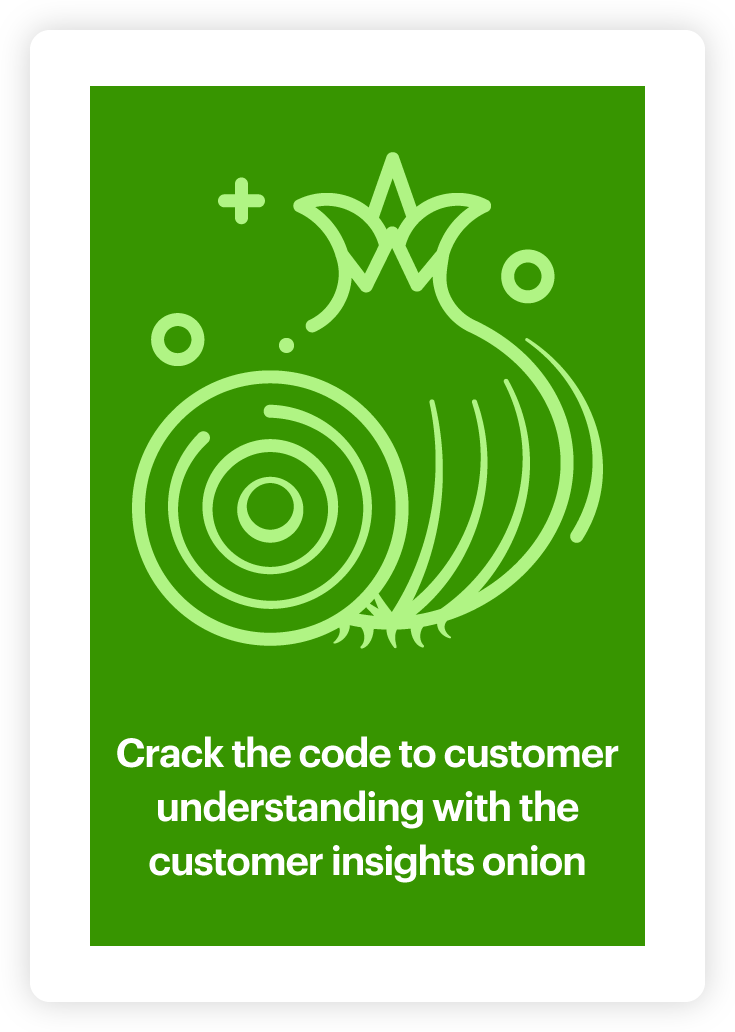What are customer insights?

If you’ve found yourself googling: “What are customer insights?” – look no further. As businesses continue to become more data-centric, customer insights have received a lot of attention. But as is often the case with business buzzwords, the term has taken on different meanings for different people.
In this article, we’ll break down what customer insights are, how they differ from market research, and why they’ve become a crucial component of any successful business strategy.
What is customer insight and why is it important?
To put it simply, customer insights research is the process of gathering and analyzing customer data to better understand buying behavior, preferences and opinions. By pinpointing areas of strength and opportunities for improvement, brands use customer insights to communicate value, develop better products, enhance customer experience and make customer-centric business decisions.
The importance of customer insights is made clear by the fact that it costs 5x more to acquire a new customer than to retain an existing one. Customer satisfaction not only makes money, it saves money.
Often used interchangeably with the term customer insights, consumer insights research provides the evidence you need to confidently make decisions rooted in the wants and needs of your customer base and eliminates the need for guessing or costly trial-and-error processes. The benefits of being insight-driven are evidenced by the fact that brands utilizing customer insights outperform competitors by 85%.
In the case of one retailer, a McKinsey study found that they were able to more than double email open rates by analyzing consumer purchasing behaviors. The jump from 10-15% to 25-35% came down to the discovery that consumers made a purchase only once per year – but typically returned to browse online within days of a purchase. This retailer took advantage of this opportunity by communicating with consumers and marketing more products immediately after a purchase to capitalize on this short buying window.
Companies like Netflix owe much of their success to hyper-targeted and individually tailored user experiences. Based on previous viewing behavior, Netflix shows users the content they are most likely to watch. This data-driven approach to crafting the user experience all but ensures the success of original Netflix content. Tracing and analyzing viewing behavior pinpoints the specific genres, themes, actors and other factors that they can be confident will capture viewers’ attention.
What’s the difference between customer insights and market research?
While the two disciplines share a lot in common, market research is concerned with learning about the macro environment in which your business operates whereas customer research is more inward-focused, examining how people feel about your brand, products, or services to better understand the customer journey.
Both customer insights research and market research are crucial for businesses wanting to make data-driven decisions. They help to eliminate guesswork and provide you with factual information about your audiences as well as the broader market. Although market research and consumer insights share a similar purpose, they are different when it comes to application.
Market research is used as a general term to describe the process of learning about industries, competitors and target audiences. Market research data sources include surveys, social media conversations, focus group or in-depth interview (IDI) transcripts, forums, reports produced by governments of consultancies, academic research and more.
The purpose of market research is to generate knowledge that helps organizations understand market conditions, spot trends and identify opportunities. Market research insights can be used to inform brand marketing and product development and answer specific business questions, such as which geographic market to enter, where potential whitespace exists, or how your business is perceived vs. the competition. What’s more, market research helps you define current and future industry trends. In that sense, market research and customer insights research can support and build on one another.
Customer insights are best thought of as a sub-discipline within market research. You use customer data typically gathered through channels like feedback surveys, customer service interactions and online reviews to produce a narrative that enables you to understand and make recommendations about specific parts of the customer journey. As an example, they might help your business improve the in-store experience or help resolve specific product quality issues.
Thus the main distinction between market research and customer insights lies in the next steps. Put simply, market research is generally used to make high-level strategic decisions, while customer insights provide tactics for improving the customer journey. However, keep in mind that there can always be overlap.
Putting customer insights to the test
Customer insights provide businesses with the information they need to make better decisions that reflect the needs and attitudes of target audiences. In order to use consumer insights, however, you need high-quality data and a good process for making sense of it all. Without the right tools, this can be cumbersome – especially when dealing with mountains of unstructured text data from interviews, surveys, or social media and forum conversations.
Relative Insight is an authority when it comes to customer insights. It’s in our name. Our AI and natural language processing powered approach to text analysis efficiently extracts meaningful insights from qualitative customer feedback and market research data – surveys, reviews, social media, transcripts and more. By allowing you to segment and compare data sets with ease, you can get to the heart of what your customers are saying and uncover insights that will surprise you.
Our customer insights analysis tool helps insights teams understand what customers really care about. Download our customer insights framework or book a no-commitment discovery call to learn more!
